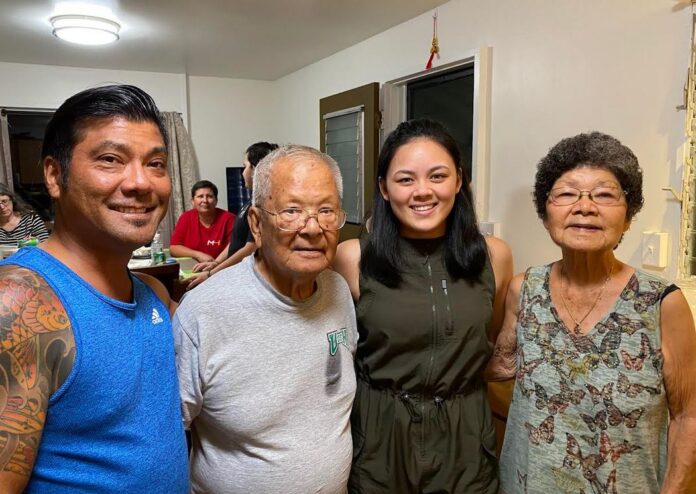By Allyson Pang, AsAmNews Staff Writer
(Editor note: This is one of a series of stories looking at interracial marriage. Reporters from 20+ ethnic media outlets including AsAmNews turned the lens on multiracial couples in their communities. The stories offer intimate portraits of how people from California—as well as from all over the world—find and marry one another, creating a cosmopolitan culture in the state that has never existed before. While racial hate continues to rise, the epic story in California is one of love across all color lines. Visit California Love Stories to see more in the series.)
Hawaii resident Taylor Miyashiro ethnicities include Japanese, Native Hawaiian, Portuguese, Filipino, Chinese and Irish. Yet she finds she is disqualified from benefitting from scholarships meant to uplift those communities because she isn’t the right mix.
Organizations like the Hawaii Community Foundation (HCF) filter through over 200 scholarships to match and award eligible students, often based on their ethnicity.
When preparing to fill out a scholarship specific to being Filipino, she felt stumped about what to write because it asked for personal experiences from within the culture. Miyashiro said she grew up closer to her Native Hawaiian ancestry than her other ethnicities, including Filipino.
“There’s also an expectation,” Miyashiro said to AsAmNews. “If you’re this race, you also have to know a hundred percent of the culture…and have it apply to you in some way.”
Miyashiro said that the application questions couldn’t be answered by doing research, it had to be lived experience.
While Hawai’i is well-known to boast the highest population of multiracial people in the nation, the question raises if mixed-race people might be disadvantaged by some of the systems in place.
Another program is the Hawaiian Home Lands Homestead Lease, which is a 99-year housing lease with an annual rent of one dollar per year.
To be accepted, applicants are required to have 50% or more of Native Hawaiian blood; a rule that has gone unchanged since 1921. For the family of the applicant to keep the house, depending on the relation, they must have 25% to 50% Hawaiian blood. Otherwise, the lease cannot be succeeded.
Miyashiro had a similar experience while attending Seattle University. At a Filipino club meeting, she and other members were reassured that any percentage was “enough” to be Filipino. Later, she received a club email to a scholarship for Filipino students in her major but discovered she was not eligible for it.
The scholarship required applicants to be 50% or more Filipino, while she was only about one-eighth.
“I’m literally not enough to have this opportunity,” Miyashiro said. “They say that I’m Filipino, when I go to this club meeting they tell me ‘you are enough, you are enough’ and then they forward a scholarship opportunity…where the narrative is totally different.”
Compared to other less diverse places, Hawai’i might have a better chance of adapting such systems to accommodate mixed-race people because of its perceptions of race.
Living in Hawai’i has been proven to impact how people view race.
Kristin Pauker, a University of Hawai’i (UH) professor and researcher in mixed-race studies, explained how White out-of-state UH students became more flexible in thinking about race over their time in Hawai’i.
“Which gets at this idea again [that] your environment can impact how you think about race,” Pauker said to AsAmNews. “I think that’s what is perhaps unique about Hawai’i is that there are ways in which race is constructed here that are different and can lead to people thinking about race differently.”
Pauker found that Hawai’i children view race as nuanced and complicated, because of their constant interactions with children from other cultural backgrounds. Although, Pauker added that just because Hawai’i has diversity, does not mean there are not still problems with race; these issues just operate differently in the islands.
“I understand there are some efforts in preservation of a culture and a people,” Miyashiro said. “But at a certain point you can’t have people who are a majority percentage of a certain race because as time goes on, people are going to get more and more mixed. And that can’t undo itself.”

AsAmNews is published by the non-profit, Asian American Media Inc.
We are supported through donations and such charitable organizations as the Robert Wood Johnson Foundation. All donations are tax deductible and can be made here.


My friend Shane Murphy is the right mix and looks great. Don’t use his picture for your clickbait article. It’s rude!
Hi, Ting,
Thanks for expressing your concern on behalf of Shane. I think if you read the article carefully you will see that we are not saying anyone is not the right “mix.” The point of the story is to detail some of the discrimination felt by those of mix-race heritage.